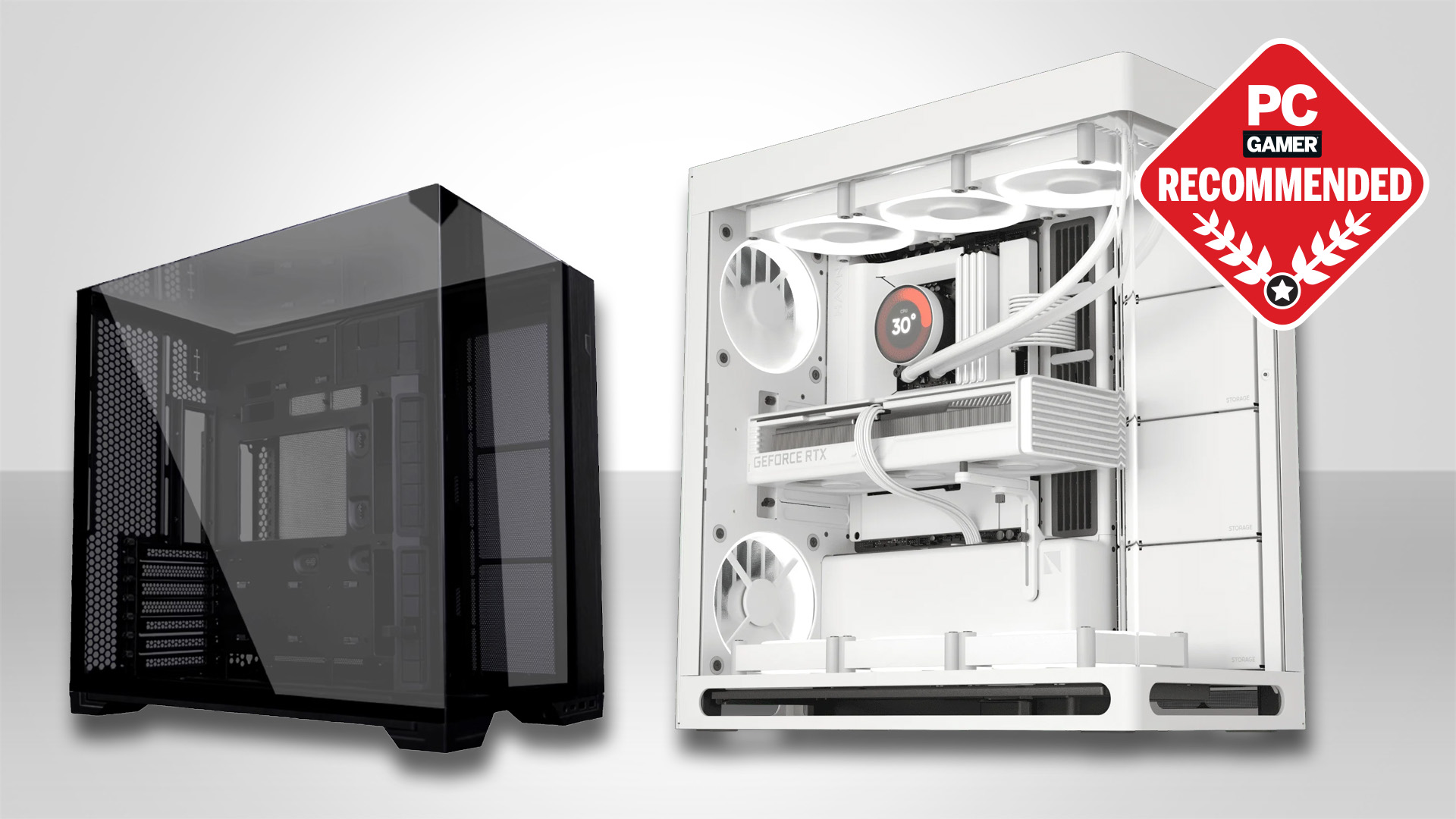Our Verdict
With its own 276-layer NAND and Phison's latest controller, this budget drive absolutely dominates those price-to-performance ratios and then some. If you're looking for a cheap, affordable, versatile SSD for your next system, the P510 is a fine pick and well worth considering.
For
- Best E31T sequential speeds
- Good pricing
- Perfectly balanced
Against
- Sluggish load times
- Average random 4K performance
PC Gamer's got your back
Name a better pairing than Micron and Phison. I'll wait. PB&J? Penn and Teller? Not a chance. That fateful mix of Micron flash and Phison controller has delivered some absolutely scorchingly fast SSDs over the years. From the T500 to the T705, it's a company that's gone from strength to strength, delivering some exceptional storage off the back of Phison's impressive controller tech. When the big blue boys reached out and offered me a chance to review its latest P510 budget SSD, complete with that shiny new E31T controller, well, I just couldn't resist.
Now, to be clear, the P510 isn't the first drive I've tested with the E31T controller. Not by a long way. Both Corsair's MP700 Elite and Kioxia's Exceria Plus G4 equally house the DRAMless unit inside. The difference, though, comes in the form of the flash. Whereas Corsair and Kioxia are utilizing the same 218-layer BiCS8 TLC solution, Crucial has gone in-house and picked up some of its own Micron 276-layer TLC NAND instead. Far denser and technically far faster memory, at least on paper, and that's what makes this drive interesting.
The big advantage that Crucial has with that NAND predominantly comes down to price. As it's not going to a third party for its flash, there are no middleman fees here to deal with, and logistical issues are nonexistent. In fact, higher densities, in theory (once R&D expenditure is covered), reduce manufacturing costs as well, as you're effectively packing more bits into a smaller space, saving on material and manufacturing time too.
That's kinda panned out with this one as well; the Crucial P510, in its 1 TB capacity, comes in at just $100. Corsair's MP700 Elite slides in at $110, and well, I'll let you know about Kioxia once the 1 TB variant lands stateside.
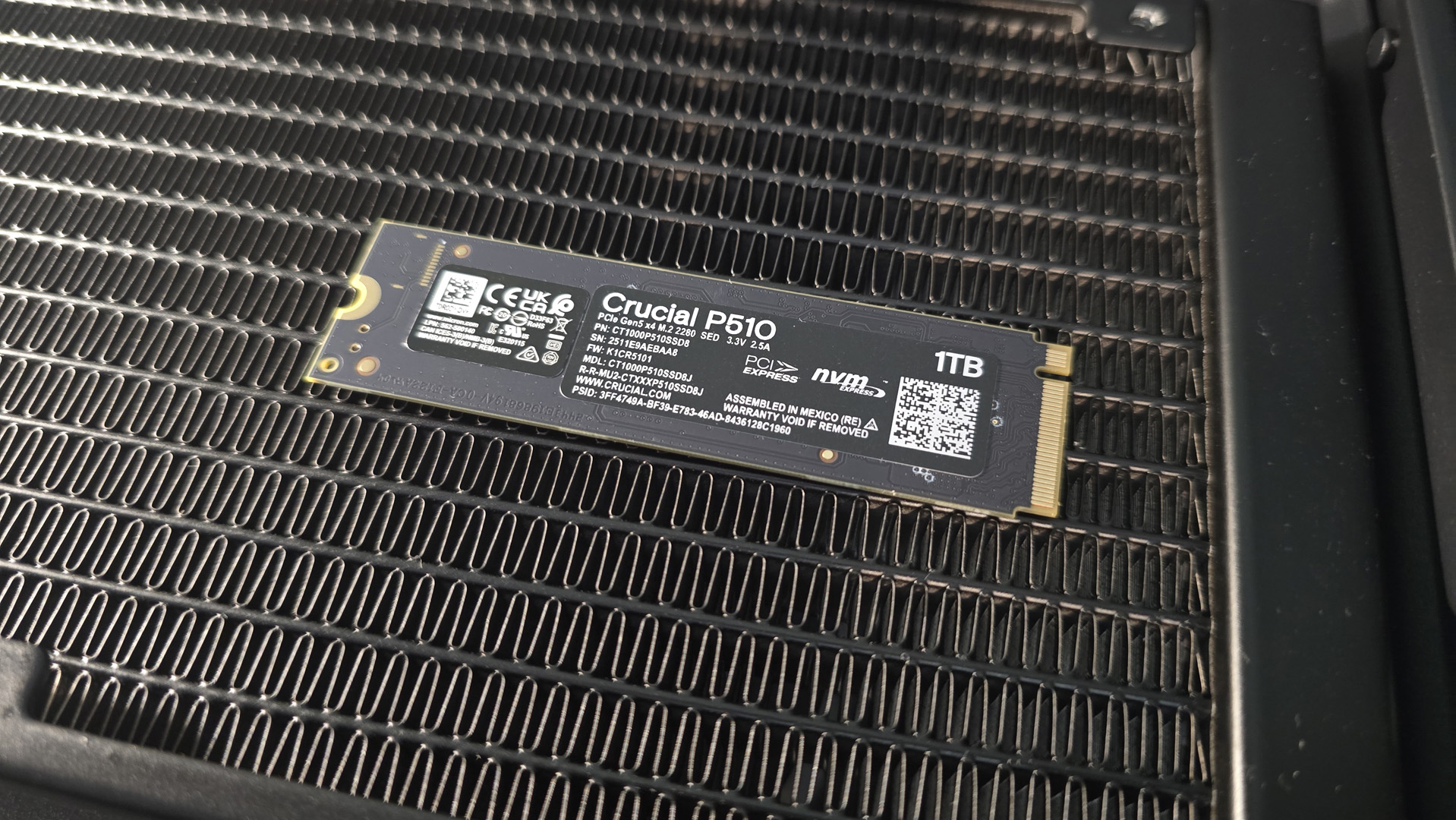
Capacity: 1 TB
Interface: PCIe 5.0 x4
Memory controller: Phison E31T
Flash memory: Micron 276-Layer TLC NAND
Rated performance: 11,000 MB/s sustained read, 9,000 MB/s sustained write
Endurance: 600 TBW
Warranty: Five years
Price: $100 | £94
That's the thing that we need to bear in mind here, though. The P510 is effectively a budget SSD line. It's designed to act as Crucial's PCIe 5.0 equivalent of its fascinatingly diverse P310 lineup. But, of course, the big difference being, it's now on the PCIe 5.0 standard, and from launch is available in a single-sided 2280 form factor, giving it fairly robust platform interoperability (a fancy way of saying it fits in a lot of devices now).
So, for those out of the loop, Phison's biggest criticism (and arguably the biggest criticism with most early PCIe 5.0 drives) was the temperature these things got to. Most of the flagship units, some of the best SSDs out there, regularly topped temperatures at the 80-plus mark. That's hot, seriously hot, and these drives were anything but efficient in the early days. In fact it was mandatory for those early 5.0 drives to come equipped either with a massive heatsink strapped to them or, for the early reference models, a ridiculously annoying tiny fan attached to them; they were that toasty.
Phison's trying to correct that with its E31T controller. Compared to its E26 variant (the controller launched with those flagship units), the 31T moves to a cacheless design and has entirely shifted the manufacturing process from TSMC's 12 nm node to its 7 nm node instead, dramatically improving efficiency and reducing temps in the process. Phison's also cut the max total bandwidth in half, reducing it to a quad-channel architecture as well, and what that leads to are drives that are remarkably cooler than their first-gen counterparts with comparable speeds as well, albeit not quite as zippy as those at the top end of the spectrum. Modern-day flagships, like WD's SN8100 with its Silicon Motion controller or Crucial's own T705, still dominate that arena, albeit with considerably higher temps as a result of that extra speed.
Keep up to date with the most important stories and the best deals, as picked by the PC Gamer team.
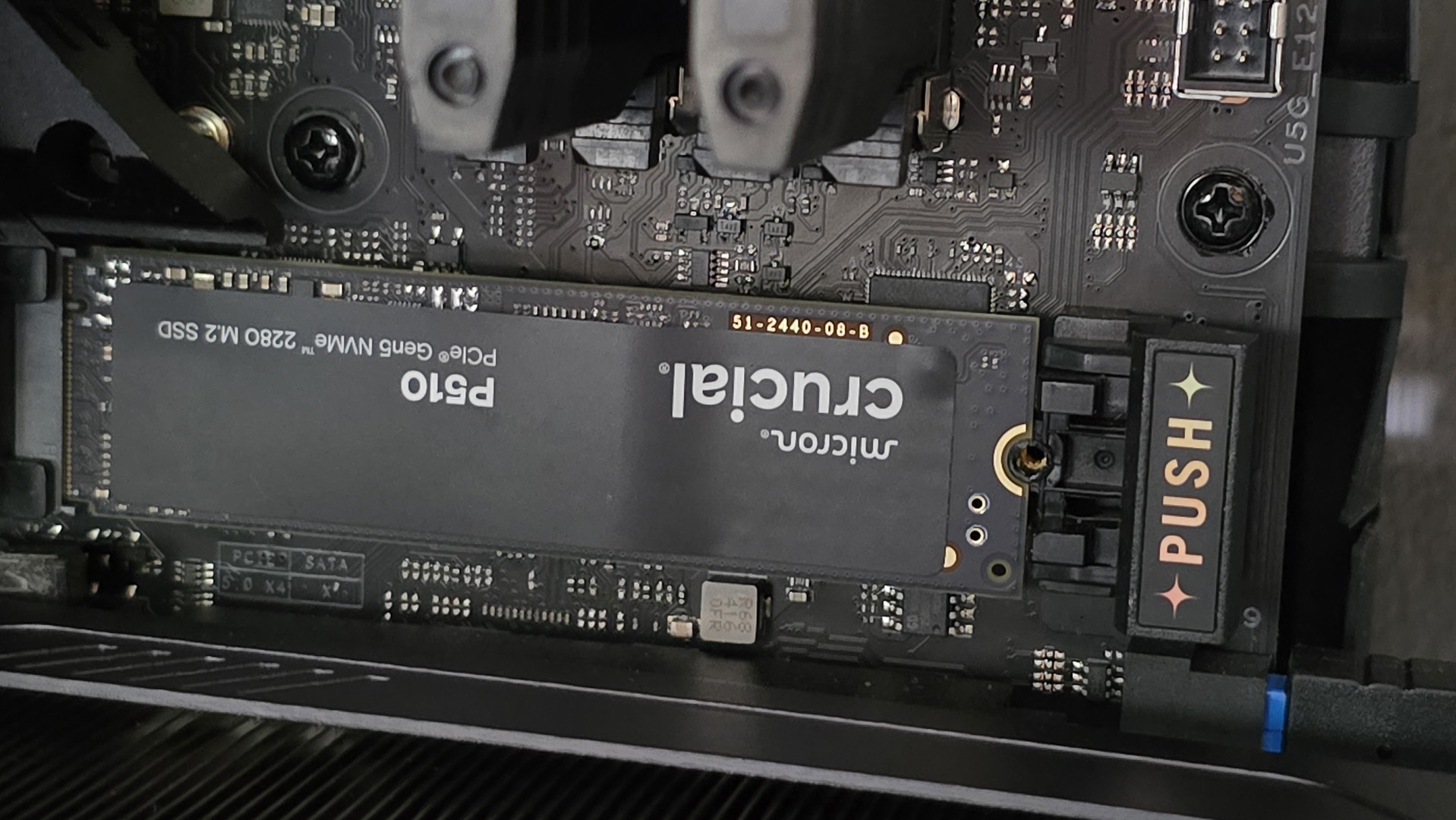
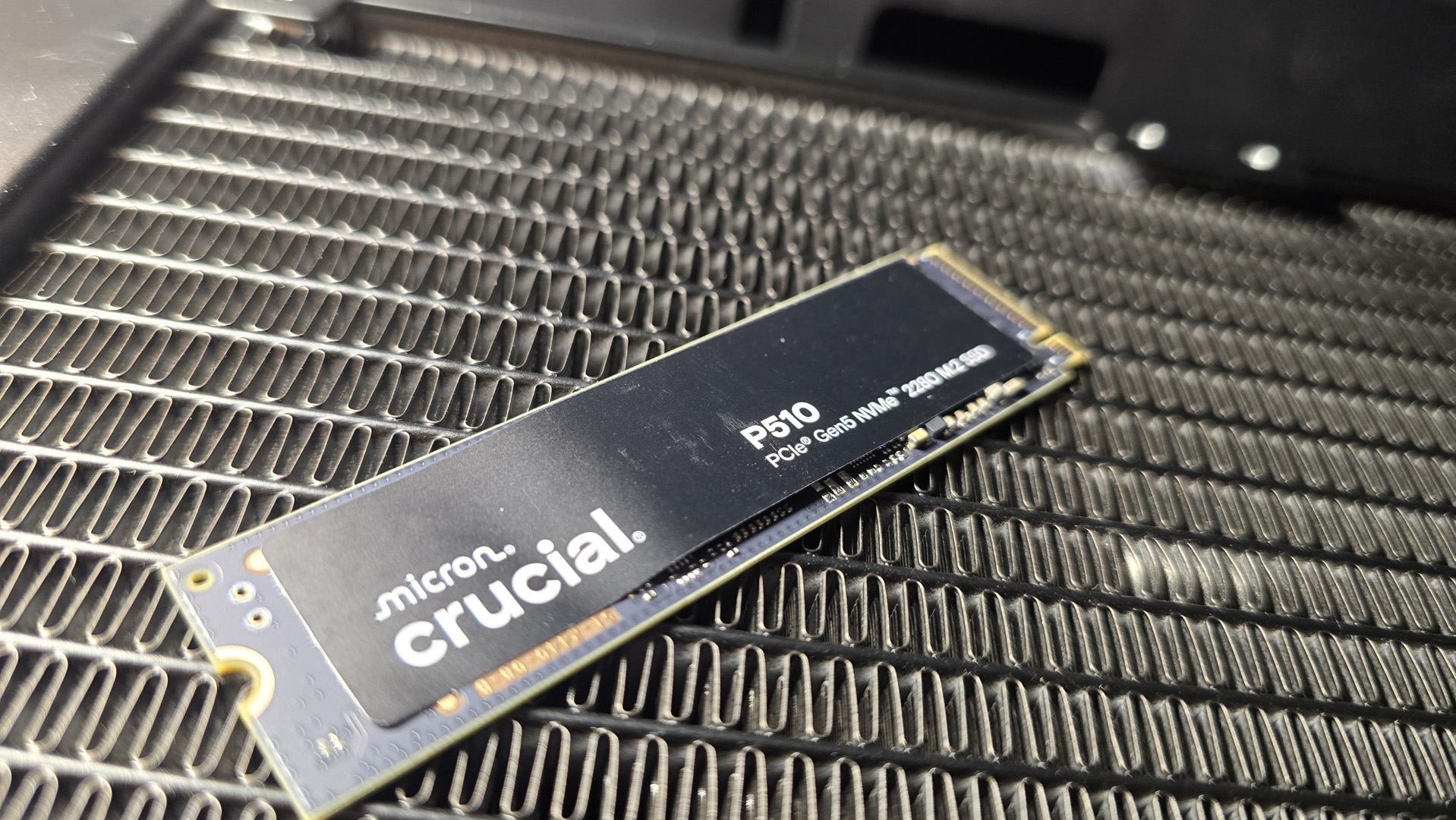
So, we've got that same controller, yet slightly zippier NAND. What does that lead to? Well, the good news is that sequential performance is off the charts. Even for this 1 TB config I have on test here, in CrystalDiskMark it rips and roars along at 10,973 MB/s on the read and 9,394 MB/s on the write. That's dramatically faster than both the Exceria Plus G4 and Corsair's MP700 Elite, both of which (probably unsurprisingly) averaged around 10,200 MB/s and 8,600 MB/s, respectively.
That, though, is kind of where Crucial's NAND flash memory advantage ends, as the random 4K workloads are far more ordinary. Take the 1 thread read results, for instance. Corsair 88 MB/s, Kioxia 82 MB/s, Crucial 84 MB/s. The write speeds are even more average than that, with Crucial landing a score of 316 MB/s. Relatively that's a good score, but comparatively it's slow when compared to the other two drives. That translates to load times as well. Final Fantasy XIV: Shadowbringers was equally quite sluggish and it sat in the middle of the pack in 3DMark's storage test as well.
That tells us one thing: that a greater NAND flash density and improved latency don't necessarily translate to faster random 4K performance, and that's mostly dependent on the controller performance and firmware itself.
Still, that's not necessarily a bad thing. Compared to the vast majority of PCIe 5.0 SSDs, those random 4K scores are solid, very good even, and the fact that Crucial's managed to eke out that extra sequential speed, comparable to early-day PCIe 5.0 drives with far greater efficiency, is nothing if not impressive.
✅ You want a perfectly balanced budget SSD: With solid all-around numbers, good temperatures, and an outstanding price, the P510 is the perfect pick for those wanting the best of everything without breaking the bank.
❌ You're looking for the ultimate flagship: Price to performance may be great, but it's very much a jack of all trades. You can get far better performance than this, but at a cost.
As for temps, they were equally favorable. Slightly higher, yes, at 64°C under test; however, there are a few variables we need to consider here. Firstly, the ambient temperature was three degrees hotter than when I tested the Kioxia, and secondly, the P510 is in its 1 TB capacity, not 2 TB, which could potentially affect the rating here (as the P510 is utilizing one NAND package, not two). Still, I don't expect this drive to get above 70°C, and if you've got it under a motherboard heatsink, you're not going to have an issue at all.
Crucial has effectively taken one of Phison's most efficient controllers to date and paired it with some of the best NAND that it has on offer. Yes, when isolated with those two other Phison E31T drives, the numbers aren't mind-blowing; random 4K performance is kind of average, and load times are a little sluggish (again, relatively), but that extra sequential speed is a welcome addition, and the pricing is particularly juicy.
The P510 reminds me a lot of those long-gone 2.5-inch SSDs. The ones that broke the mold. The ones that finally convinced gamers to leave the world of spinning platters behind and jump headfirst into the world of solid state for their OS. It's got the performance, it's got the capacity, and the price to finally make that compelling argument that if you're not on a 5.0 drive for your OS, you really ought to be.
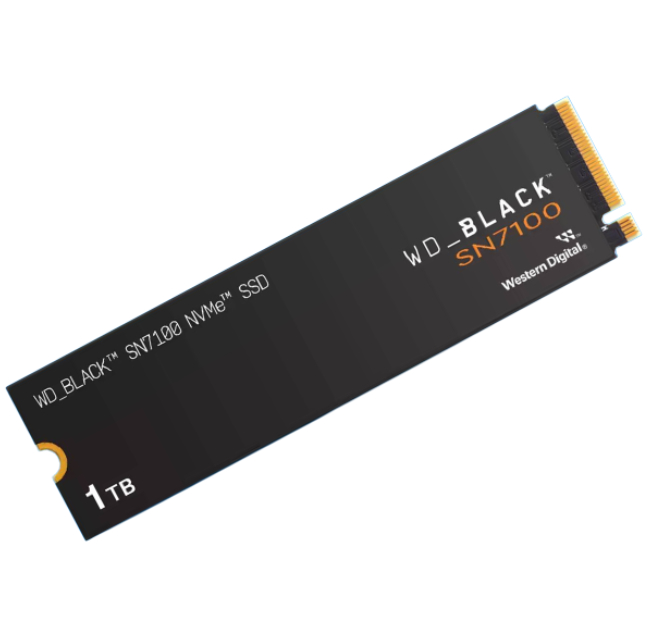
1. Best overall:
WD_Black SN7100
2. Best budget:
Lexar NM790
3. Best PCIe 5.0:
WD_Black SN8100
4. Best 4 TB:
TeamGroup MP44
5. Best 8 TB:
WD_Black SN850X
6. Best M.2 2230:
Lexar Play 2230
7. Best for PS5:
Silicon Power XS70
8. Best SATA:
Crucial MX500
With its own 276-layer NAND and Phison's latest controller, this budget drive absolutely dominates those price-to-performance ratios and then some. If you're looking for a cheap, affordable, versatile SSD for your next system, the P510 is a fine pick and well worth considering.
After graduating from the University of Derby in 2014, Zak joined the PC Format and Maximum PC team as its resident staff writer. Specializing in PC building, and all forms of hardware and componentry, he soon worked his way up to editor-in-chief, leading the publication through the covid dark times. Since then, he’s dabbled in PR, working for Corsair for a while as its UK PR specialist, before returning to the fold as a tech journalist once again.
He now operates as a freelance tech editor, writing for all manner of publications, including PC Gamer, Maximum PC, Techradar, Gamesradar, PCGamesN, and Trusted Reviews as well. If there’s something happening in the tech industry it’s highly likely Zak has a strong opinion on it.
You must confirm your public display name before commenting
Please logout and then login again, you will then be prompted to enter your display name.


